For the middle part of our 12-day Alaska vacation, we left Denali National Park and drove six hours south to Seward, AK. Our primary adventure was an all-day boat tour with Major Marine Tours. We chose to visit Kenai Fjords National Park‘s Northwestern Fjord. Boat tours represent a “Venn diagram” (intersection) experience for us. We each have our own ideas for how best to savor moments. My husband wanted to photograph seabirds, including several we’d never seen before. I focus on marine mammals and glaciers. And my daughter loves to capture moments with her watercolors.

Visiting Kenai Fjords
Kenai Fjords National Park can be enjoyed in several ways. You can visit by air, which we chose not to investigate. By land, you can hike to the Exit Glacier Overlook or the Harding Icefield Trail. We chose to explore the Northwestern Fjord by Major Marine Tours’ 8.5-hour encounter. It provided us access to the widest variety of tidewater, piedmont, hanging, and cirque glaciers. It also would give us the best opportunity to spot the most seabirds and marine mammals.
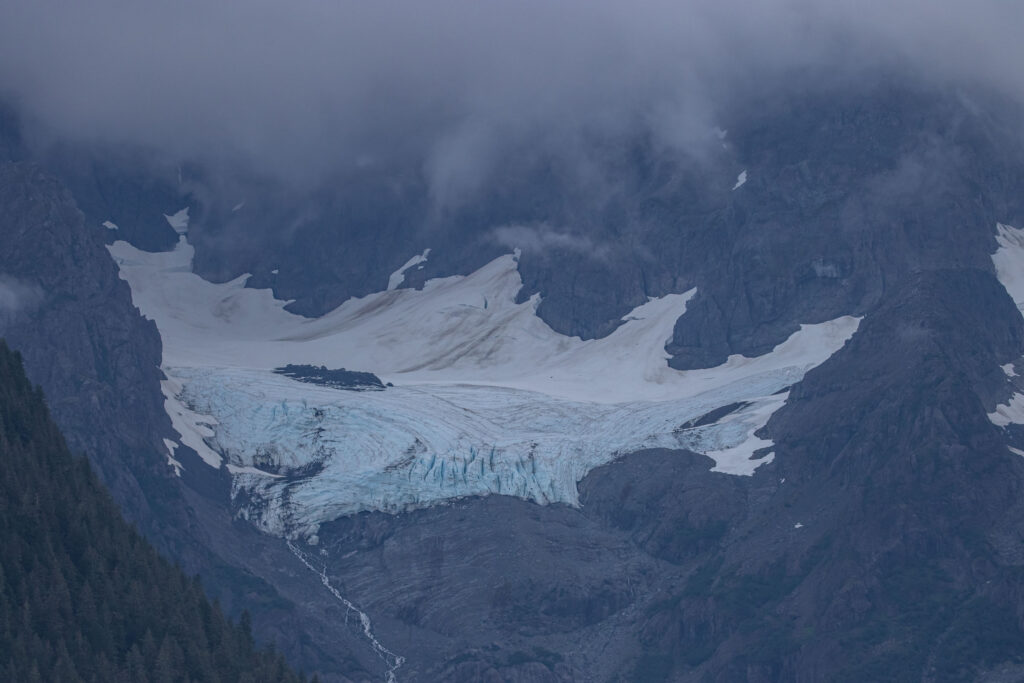
Wildlife in Resurrection Bay
On August 30, under mostly cloudy skies, the water was about as calm as it ever gets, according to our tour crew. Nevertheless, recalling a miserable experience during a pelagic trip years earlier, I took a dose of Dramamine before boarding. The Orca Song is a 65-foot monohull boat outfitted for 128 passengers. As long as I stayed outside the main cabin, I felt fine.
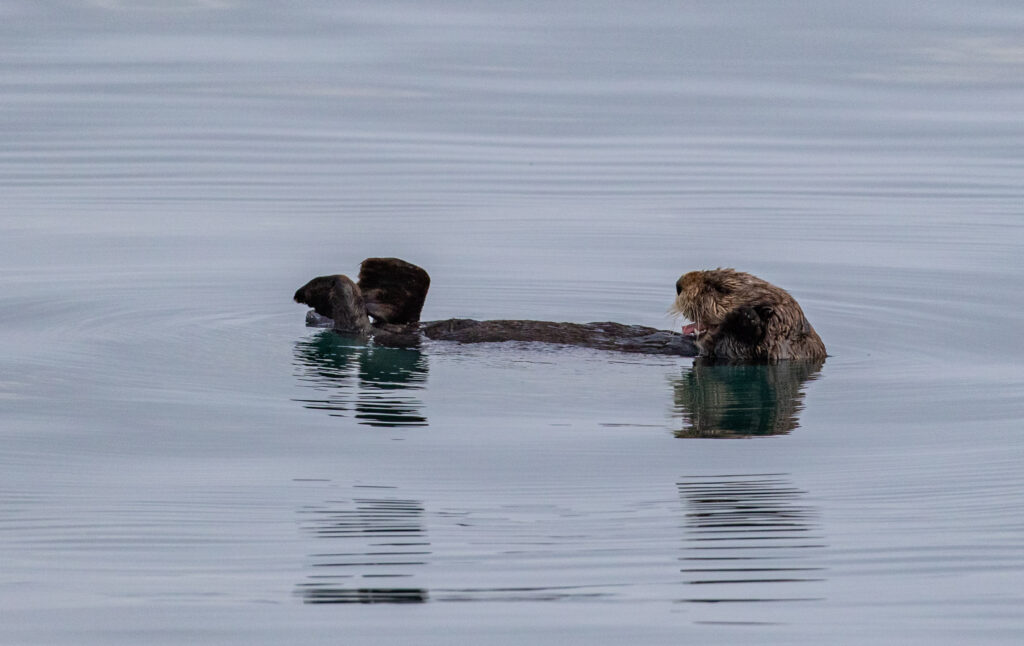
As we made our way across Resurrection Bay, I kept my eyes on the many cirque glaciers (alpine ice fields high in the mountains) as each one has differing characteristics.
Our first wildlife spotting was a sea otter resting on its back, hind flippers in the air. We learned that they have two layers of incredibly dense fur, more than a million fibers per square inch, and are the only marine mammals without blubber to keep them warm. Another curious otter swam toward us, effortlessly. My husband stayed on the lookout for kittiwakes, tufted and horned puffins, bald eagles, and cormorants. I hoped to add seals, sea lions, and whales to our list of marine mammals.
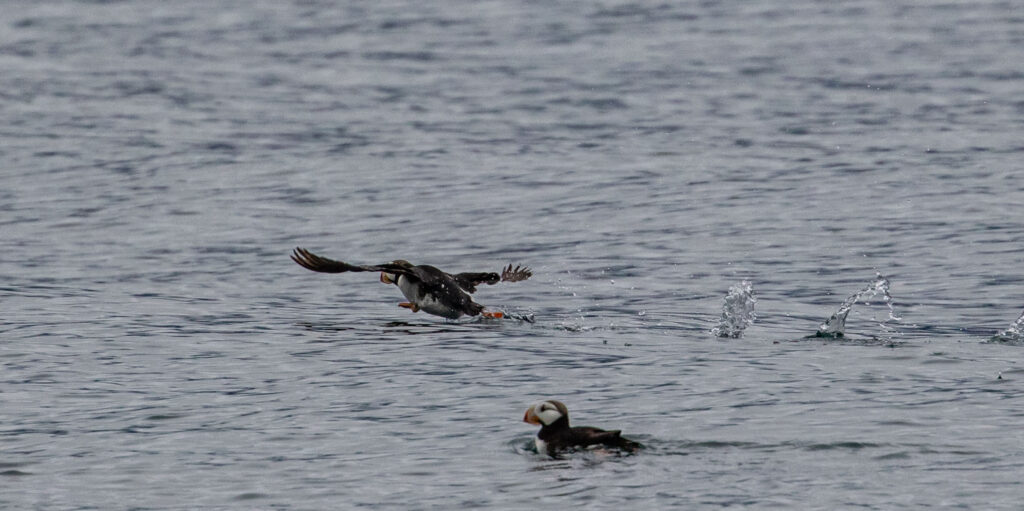
Savor Moments: Spire Cove
As we moved out of Resurrection Bay toward Northwestern Fjords, we navigated closer to land. We spotted a pair of bald eagles, tufted and horned puffins, and cormorants, visiting both nesting and resting spots for birds and mammals. One unique stop was at a pretty area our captain called Cathedral Spires, but online was referred to as Spire Cove. I overheard one tour participant say it reminded her of Vietnam (where I’ve never been.)
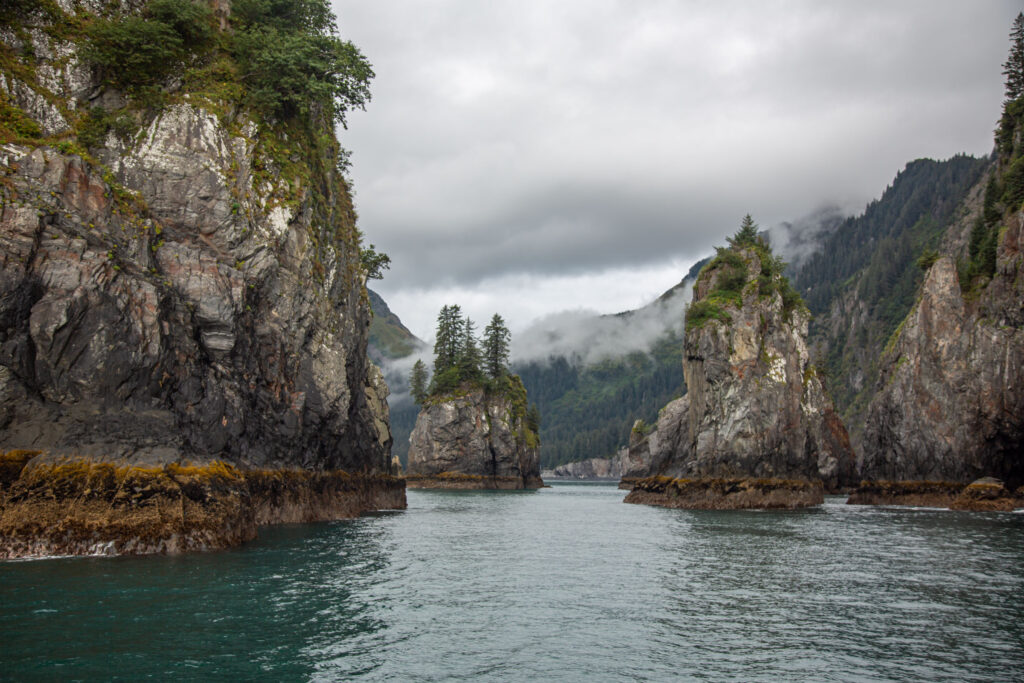
Resting Sea Lions
Beyond Spire Coves, our captain led us to pull-out places to see seals and sea lions. On the leeward side, opposite the crashing surf of the Pacific Ocean, we enjoyed visiting dozens of sea lions pulled out resting with their pups. I marveled at what they found as suitable “beds,” as it looks to me like they could either roll into the water from the slopes or get jagged cuts in their blubbery hides.

Savor Moments: Calving Tidewater Glaciers
As we made our way into the Northwestern Fjord, I remained outside taking photographs of a beautiful rainbow while most guests ate lunch. We visited one hanging and two tidewater glaciers. Their deep blue color was stunning. Chunks of ice floating in the water dwarfed several kayaks that dared to get close.
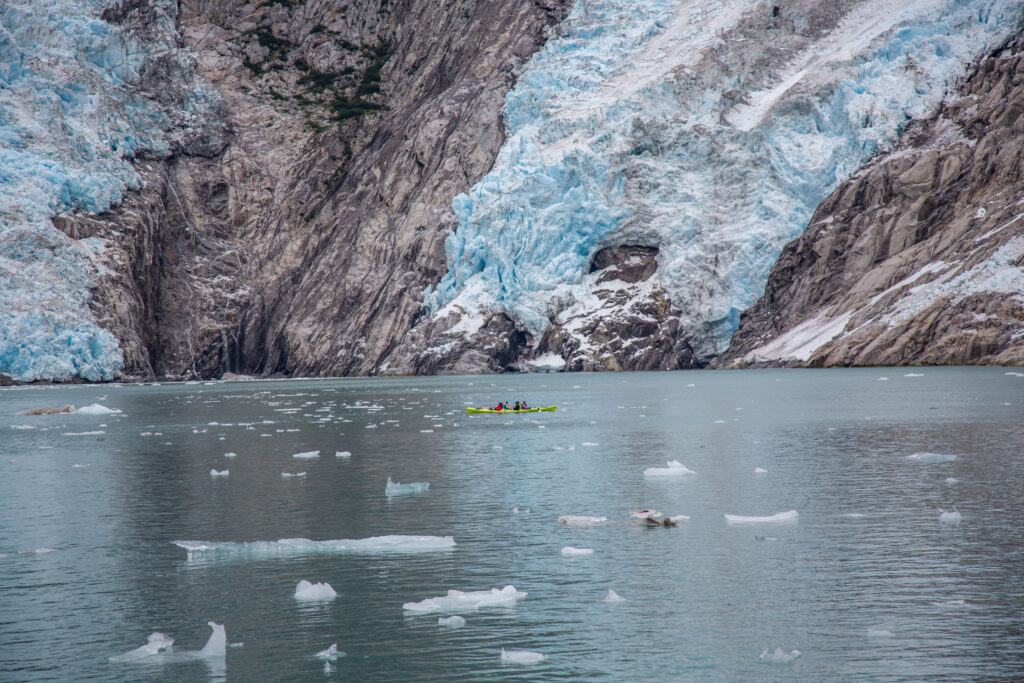
Once we were close enough, the captain silenced the engine for several minutes and safely positioned the boat so we could hear the groaning and moaning of the shifting ice. Rocks and ice tumbled from high on the glaciers and plunged into the sea, sending up clouds of ice dust and adding to the debris in the fjord. Nothing that would sink the Titanic, but we could certainly hear them clunking against the boat’s hull.
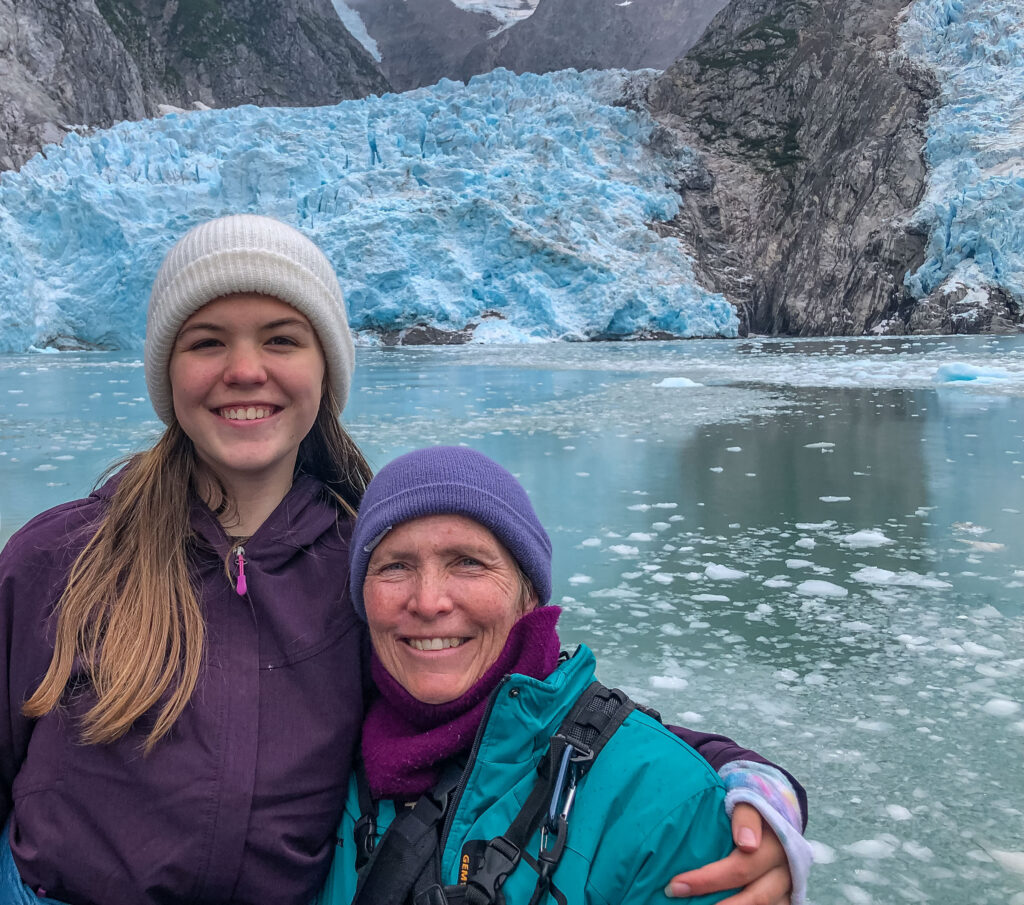
A steward pulled large chunks of ice into the boat and explained why glacier ice appears to be blue. Glacier ice is buried under many layers of ice and snow. The layers press the air out of the deep layers, causing ice to form large, dense crystals. These crystals scatter short-wave blue light, making deep layers of ice appear blue. But when large chunks of ice fall into the fjord, they look pretty much like we’d expect.
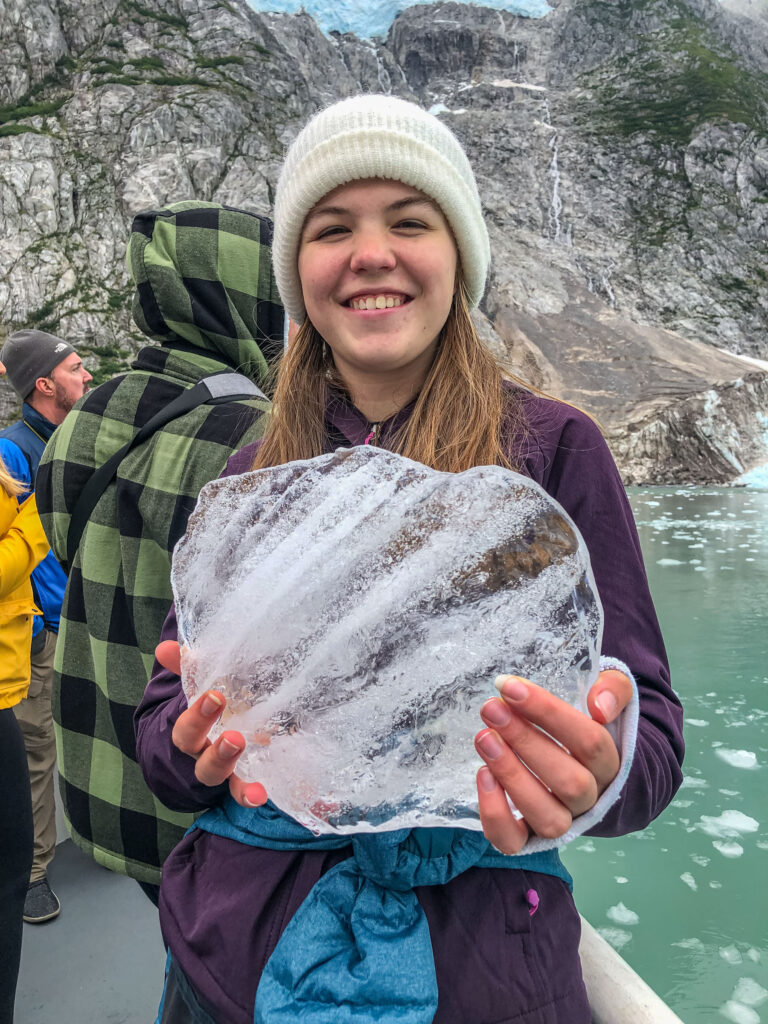
Haul-outs for Seals
As we slowly retreated from the glaciers, we could see many years of compressed snow and ice floating in the fjord. On some of them, seal mothers pulled out to rest with their pups. We puttered slowly through the ice so as not to disturb the resting families. So adorable!
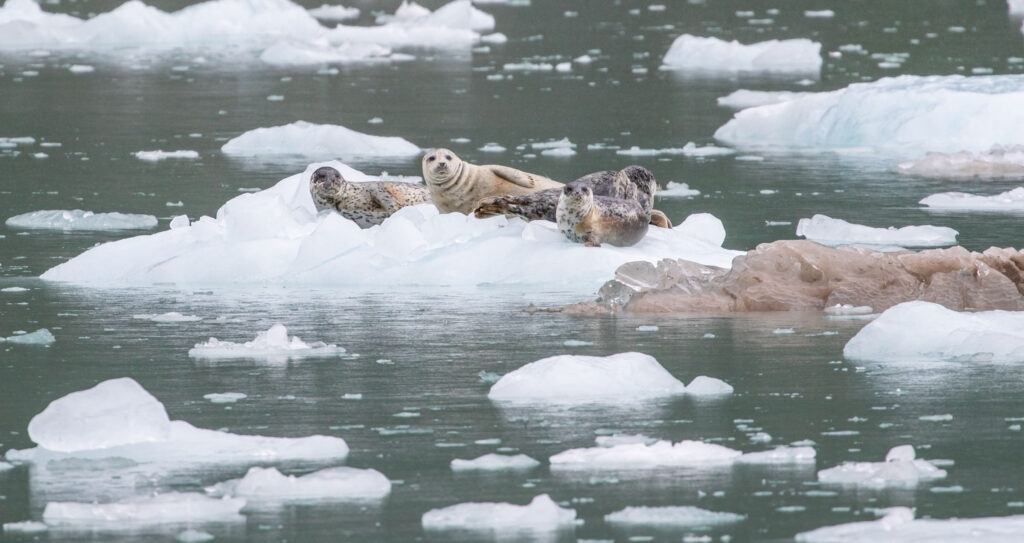
We learned that the average temperature within the park in late August and early September ranges from 37-44 degrees F. We’d brought wool hats, mittens, and our warmest coats specifically for the marine tour. Such attire allowed us to stay comfortable outside for hours despite overcast skies and ice surrounding us.
I didn’t envy the seals in such harsh, cold conditions, but then again, they have protective blubber insulation an inch thick, everywhere but their fins.
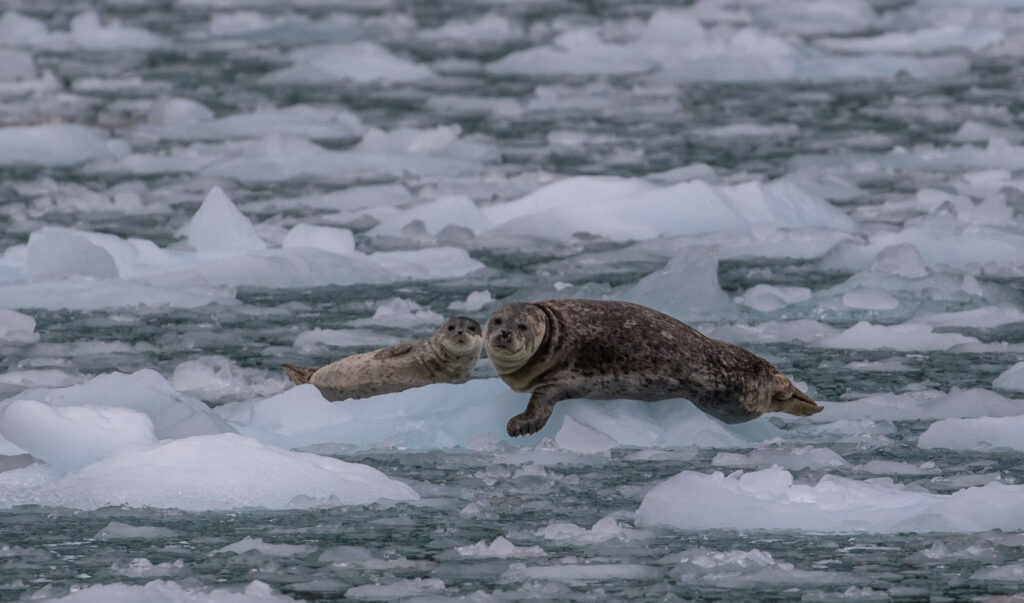
Savor Moments: Orcas
Our last marine mammal sighting included two dozen Orca whales. In Washington pre-COVID, we used to go on whale-watching trips through Island Adventures several times a year. To see two resident pods in Alaska reminded me of everything we’ve missed during the past thirty months. In that small moment, I was reminded of all the good things we used to enjoy that we can finally do again. Another moment to savor.
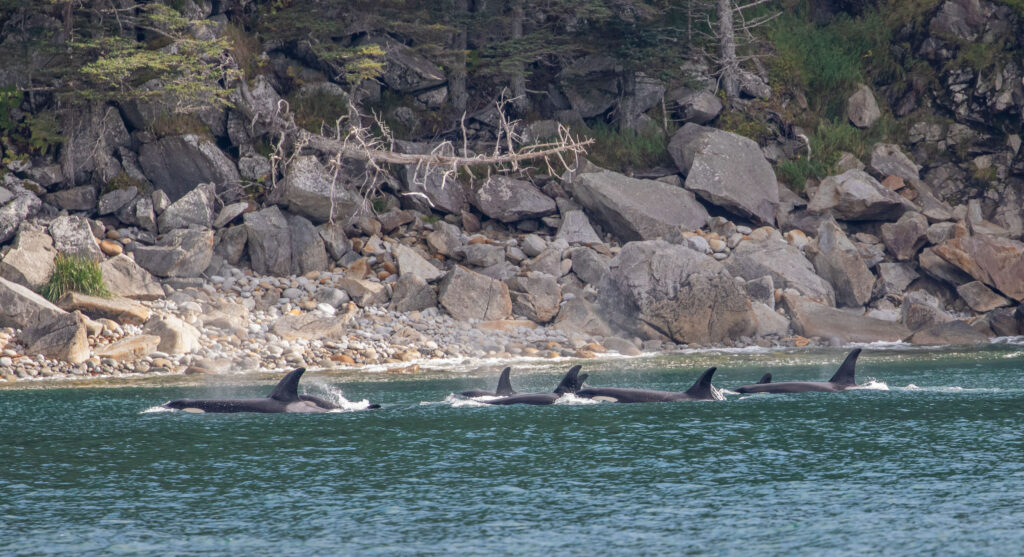
Savor Moments: Take-Aways
A wise coach, Tama Kieves, this week asked, “How can you reframe losing into expanding?” How can we appreciate MORE those things that we lost, that we now have again, perhaps in a new way? Can we turn our losses into necessary teachable moments and move forward with our newfound resilience and wisdom?

While I will always have fond memories of the eight years that I volunteered at Woodland Park Zoo, nothing quite compares to appreciating wild animals in their natural environment. Major Marine Tours provided me with a very special birthday experience I will always remember. And reflecting provides us with ongoing lessons for growth and change if we allow ourselves time to stop and reflect.
What recent losses have you experienced that you can reframe into gains? Share them in the comments. I love to hear from readers and your comments help others grow, connect, and learn.


The first lesson I (re)learned from the account of your Kenai Fjords’ visit is how different our expectations and subsequent experiences are when discovering something new. I say “RElearned” because I am apparently not able to remember this fact when I share my excitement about a particular experience I have outdoors… only to be surprised and mildly disappointed that others may not be in awe of the way lichens drape over a weathered rock face. Don’t we ALL find this fabulous? And what is all this big deal about spotting a rare species of lizard five feet away from the rockface? Is that really that interesting? 🙂 I must often remind myself the obvious “different folks, different strokes”… Based on my fascination with rocks and lichens, it is not too surprising that I really love the photo of Cathedral Spires; such beauty in the play of light, colors and textures between the rugged spires, the evergreen crowns, and the silvery waters of the cove! While enjoying your descriptions of the many marvels of Kenai Fjords, it is hard not to think about how fragile these glaciers, the wildlife, and even the forests truly are. While I cannot think of a way to turn such a potential loss into a positive, I have recently reflected about a lesser loss I experienced following my long distance hike in the Washington Cascades: friends I made along the trail, during breaks, or at camp… but then lost forever day or weeks later. We kept “running into each other” as we moved at a different pace, took days off at different points… but eventually found ourselves again at the same spot at the same time, glad to be reconnecting for a few minutes or a few hours, We forged a quick but meaningful friendship… and yet we parted ways “at the end” and did not feel the urge to share phone numbers and, for those who had them, social network identities. I do miss my trail friends, but I feel a greater beauty in the “letting go” than I probably would have felt from a compulsion to “keep things going”. In a way, I took mental and emotional “pictures” of my friends at what feels like their best. As long as my memory allows it, I can take a look at these vignettes and be thankful that my friends gave me the gift of such candid and precious moments. It is obvious that everything changes around us, all the time; it seems that all I can really “have” is my experiences at particular moments in time. A lot of my favorite experiences came through discoveries and, quite often, in totally unexpected ways… not from “revisiting” the familiar. From this realization, I find comfort in the belief that a loss if often an invitation to put my emotional boots on and venture on a totally new path. Most often than not, when I do, I am rewarded with new treasures that do not replace what I lost but enrich it. This process is however much easier with some losses than with others….
Oh my goodness, Gerard, your post really touched something deep inside. Lichens and lizards — I know next to nothing about them. How much we can each learn from one another, if we only open ourselves up to curiosity and conversation.
I can only imagine the feeling of “loss” whenever you do a long, multi-week hike and then everyone moves on to parts unknown. It brings to mind my own very new experience with our daughter moving on to college. She has had three days of classes and two visits home over the past eleven days since moving into her dorm room, and yet everything has already changed. And as you go through a hiking experience, you change as well. Mother Nature has been hard at work up at Exit 47, my very favorite hiking area right now, and the fall colors are spectacular. But fleeting. Everything changes. And like you alluded to, if we can keep an open mind and embrace the discoveries, take the paths less chosen, do something new even though it may be unfamiliar and scary, how much richer we end up being by doing so.
Thanks also for the comment on the Cathedral Spires, that truly was a beautiful, solemn place I wasn’t expecting. And while we were expecting to see the glaciers up close, I guess I expected it to be more like my alpine experiences; the new component was being on the ocean rather than up high in the mountains. Kind of like a kid in a candy store, eyes wide open and trying to capture each moment. The one positive of the “loss” of glacial ice, if there is one, is that we can get up close and personal, and the more people who get to do that, and experience what might someday not be there, the more we can make changes to try to save what’s left. In bringing photos to readers, perhaps they can have an appreciation of the wild and take action — even if that means using reusable cloth bags — if we ALL did one tiny thing consistently, that adds up to huge changes. My brain whirls with all the change happening all around me but acknowledging it and discussing it with others who notice, too, helps.
As always, love your insights and comments. Cheers.